Not many things are worse than driving with low tire pressure. Properly inflating your tires is crucial for safety, especially when you go on a long road trip or drive on the highway.
Fortunately, doing this requires only a few minutes of your time and little to no knowledge in cars or mechanics. You can do it while on the road, or when you visit a gas station. Here is everything you need to do to fix the low tire pressure.
There are a few reasons why car and tire manufacturers recommend drivers to keep the tires properly inflated. And, the primary reason for that is safety.
When the pressure in the tires is low, the overall stability will be worse than with properly inflated tires. That’s especially true if your tires are a lot of PSI (Bar) under the recommended tire pressure.
More accurately, because the tires are softer, the handling will be less responsive – your car will feel heavier. Also, the vehicle becomes unstable at very low speeds, which is only exaggerated on the highway.
Furthermore, underinflated tires worsen the performance and fuel economy of your car. While you probably won’t be able to feel the performance decrease, the “mpg” meter on your car will show much lower numbers.
On average, the fuel consumption of your car will increase by 0.2% for every PSI of pressure dropped. This means that if the pressure falls from 32 PSI to 20 PSI, you will experience around 1.5% worse fuel economy.
Finally, driving on low tire pressure can accelerate the tread wear of your tires. Accelerated wear can quickly render your tires useless, especially for driving on wet surfaces. Moreover, this means that you’ll replace the tires sooner, which might cost you in the long run.
Inflating the tires on your car is quick and straightforward. However, to do it properly, it’s best to prepare well.
First, make sure that your tires are cold when inflating and measuring the pressure. It would be best if you did it in the morning, or only after driving a few miles. Never measure the pressure after a long ride.
It would be best if you did it in the morning, or only after driving a few miles. Never measure the pressure after a long ride.
Then, prepare with some tools. To check the pressure on your tires, you’ll need a tire pressure gauge. Nowadays, gauges are very inexpensive, and they are also tiny so that you can keep it inside the area for the spare tire.
Then, you will also need an air pump to inflate the tire. Many types of air pumps exist, including hand-operated, foot-operated, and an automatic air pump.
The hand- and -foot-operated air pumps are less expensive, but they also require much more force and take more time.
Automatic air pumps usually connect to the 12V socket in your vehicle, which makes the whole job faster and much more convenient.
Now, let’s see what’s needed to inflate your tires properly.
Unscrew the plastic cap that sits over the valve stem. On steel rims with wheel covers, you might also need to remove the cover.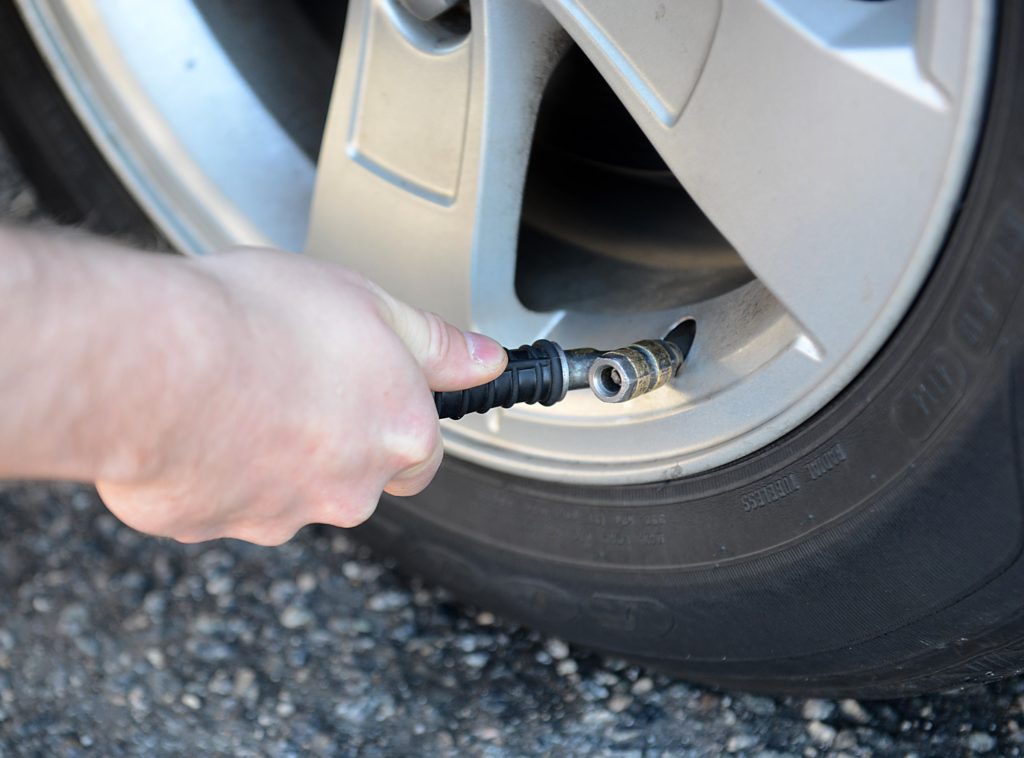 Place the plastic cap in a safe place – you’ll need to screw it in place later.
Place the plastic cap in a safe place – you’ll need to screw it in place later.
Otherwise, dirt and debris might get into the valve stem, which can get in the way the next time you want to inflate or measure the pressure in your tires.
Place the end of the hose of the tire gauge on the valve stem. Push as hard as needed, so there is no hissing noise. Then, check the reading – on analog gauges, the needle should jump immediately. On digital gauges, though, you might need to push a button to activate it.
Once you measured the pressure inside the tire, it’s best to compare it to the recommended pressure first. You can find the recommended tire pressure on a sticker on the sill of the driver’s or passenger’s door. If you can’t find it there, it’s best to refer to the owner’s manual.
Don’t inflate the tire if the tire pressure is equal to the recommended one.
Place the end of the hose on the valve stem and make sure that it clamps in place. If you hear a hissing sound, you won’t be able to inflate the tire. On some air pumps, you might need to hold the tip of the hose firmly pressed against the valve stem.
Then, start pumping for a while. Check the tire pressure on every 15-30 seconds, as overinflated tires will also not perform well. And, even if you overinflate the tire, don’t worry. Press the core of the valve stem with a sharp object, and the tire will start deflating.
Once you reach the recommended pressure, place the plastic cap back over the valve stem.
You can also fix low tire pressure at the nearest gas station. The air pumps at gas stations will automatically reach the desired pressure. Just enter the recommended pressure on the apparatus, put the hose on the valve stem, and wait until you hear the sound signal.
When one of your tires is underinflated, the TPMS (Tire Pressure Monitoring System) on your dashboard will illuminate. As soon as you inflate the tire, though, the light should go out. However, in many cases, the light might not go out immediately. Here is what you need to do to rectify that.
Driving for around 5-10 miles at speeds of 40-50 mph should be enough for the TPMS light to go out. If it doesn’t go out, make sure to recheck the pressure.
If you are sure that the tires are correctly inflated, you can reset the TPMS light. Most vehicles have a reset button on the lower part of the steering wheel column. If you can’t find it there, consult your user’s manual.
Then, turn the key to the “ON” position, push the button, and hold it until the TPMS light blinks three times. It should stop shining after.
In this day and age, fixing a low tire pressure is very easy and straightforward. Every gas station has an air pump, and you can even purchase an automatic one on the cheap and keep it in the trunk. There is simply no justification in driving with low tire pressure, precisely because it hurts safety.
Every gas station has an air pump, and you can even purchase an automatic one on the cheap and keep it in the trunk. There is simply no justification in driving with low tire pressure, precisely because it hurts safety.
And, even if this article didn’t help you find a solution for your underinflated tires, feel free to put a question down below. I’m sure we can find a solution to your issue. And, crucially, stay safe!
Automotive>Tires & Brakes | Maintenance & Repair
November 10, 2022
According to a survey conducted by the U.S. Department of Transportation's National Highway Traffic Safety Administration (NHTSA), nearly 12% of the nation's passenger cars have at least one tire underinflated by 25% or more. Considering tire pressure can affect things like handling, braking, riding comfort, mileage and safety, that's a surprising statistic.
Purchasing new tires can be a pretty involved process. There's a lot to consider when making such an important purchase, especially if you're not a car enthusiast or expert.
Many late-model cars are equipped with a tire pressure monitoring system (TPMS), which is an internal car system that alerts you when one or more tires are significantly underinflated by displaying the yellow low-tire indicator on your dashboard. Resetting your car's TPMS after the tire(s) are inflated depends on the car model, as well as whether or not you have a direct or indirect TPMS.
Tip: Tires normally lose a small amount of air pressure every day. Left unchecked, that can add up to a problem.
There are recommended techniques for both reaching and maintaining tire pressure and reducing tire wear. In fact, according to the U.S. Department of Energy, driving on underinflated tires can cause unsafe handling problems, as well as contribute to tire wear and reduced gas mileage.
Tire pressure is measured in pounds per square inch (psi). The recommended tire pressure or psi specified by your vehicle's manufacturer or on the tire itself is there to ensure that you get optimum performance every time you drive. This includes optimum tire wear and comfort.
The recommended tire pressure or psi specified by your vehicle's manufacturer or on the tire itself is there to ensure that you get optimum performance every time you drive. This includes optimum tire wear and comfort.
Granted, underinflating your tires to make them softer can result in a smoother ride and a larger contact patch (area) with the road surface. But not without some tradeoffs.
When an underinflated tire (even by as little as 6 psi) hits a pothole, it increases the possibility of damaging it. With decreased tire pressure, the center of the tire's tread bows in slightly, causing the tire to ride on its outer edges. The result is excessive wear on the tire's inner and outer shoulders. In addition, the softer sidewall of an underinflated tire can exaggerate the sway your vehicle experiences when cornering, and may cause a top-heavy vehicle to roll over.
Tip: Make it a habit to check your tire pressure once a month.
Ultimately, low tire pressure can shorten the lifespan of your tires. Having the correct pressure in car tires also helps you get good gas mileage. To understand the recommended tire pressure for your vehicle, review the tag on the inside of the door.
Having the correct pressure in car tires also helps you get good gas mileage. To understand the recommended tire pressure for your vehicle, review the tag on the inside of the door.
Here are 6 steps to follow when checking the tire pressure:


Having trouble getting air in your tires or not sure if you've got the right pressure? Just keep checking periodically until you get it right.
Tip: Driving heats up your tires, which increases the psi. It's best to check them in the morning while they are still relatively cold. You can also check them after your car has been sitting for a few hours or driven for just a few miles.
Learn more about the benefits of Synchrony Car Care today. With the right partner, you'll be prepared for all your car maintenance needs.
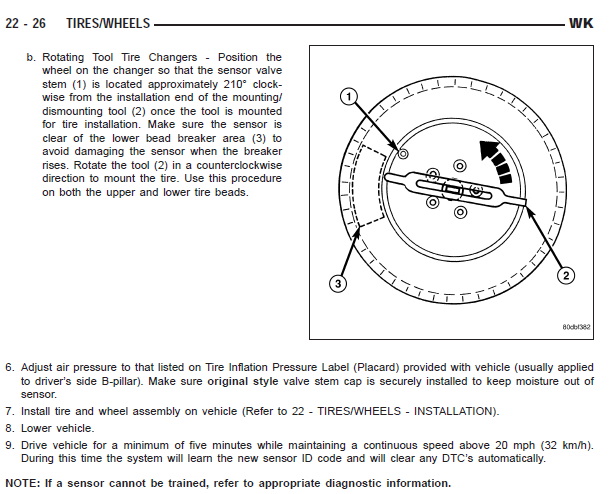 edmunds.com/how-to/how-to-check-tire-pressure-and-inflate-tires.html
edmunds.com/how-to/how-to-check-tire-pressure-and-inflate-tires.htmlDisclaimer: We include links to other websites in this article for our convenience. We do not endorse any content on these sites. All product names, logos, and brands are property of their respective owners. All company, product and service names used in this website are for identification purposes only. Use of these names, logos, and brands does not imply endorsement. This content is subject to change without notice and offered for informational use only. You are urged to consult with your individual advisors with respect to any information presented. Synchrony and any of its affiliates (collectively, “Synchrony”) make no representations or warranties regarding this content and accept no liability for any loss or harm arising from the use of the information provided. Your receipt of this material constitutes your acceptance of these terms and conditions.
© 2022 Synchrony Bank.
©2022 SYNCHRONY BANK
Even if the low pressure light is on, many people don't pay attention to checking their tires. They continue driving with low tire pressure, which is a dangerous practice. The longer someone drives with low tire pressure, the more risk they face on the road.
You might think that keeping all your tires inflated is a daunting task, but it's easier than dealing with the consequences of the lowest tire pressure. Driving with low tire pressure will adversely affect fuel economy, handling, tire wear and, most importantly, safety.
It also makes the vehicle less responsive and reduces traction. Thus, it will be more difficult for users to avoid emergency situations, such as a quick lane change. In addition to high fuel consumption, less traction means more pressure on the engine. Under-inflated tires also reduce mileage by about 0.2% for every 1 psi drop in average tire pressure.
In addition to high fuel consumption, less traction means more pressure on the engine. Under-inflated tires also reduce mileage by about 0.2% for every 1 psi drop in average tire pressure.
Due to low pressure, there is increased wear on the sidewalls of the tire. It subsequently causes explosions, killing the drivers.
Be aware that even if a tire does not look flat, it may lose pressure. So measuring air pressure is the surest way to find out. In the case of older vehicles, users should check the pressure at least once a month.
Whenever tire-related car accidents occur, studies show that only 58% of drivers can correctly understand the TPMS life-saving symbol. The number is very alarming, as sticking behind the wheel with low tire pressure can save lives.
When one continues to drive with low tire pressure, the risk of tire failure increases. Driving at 60 mph in these conditions can cause tires to explode and the driver can lose control of the vehicle, endangering the lives of everyone in the vehicle.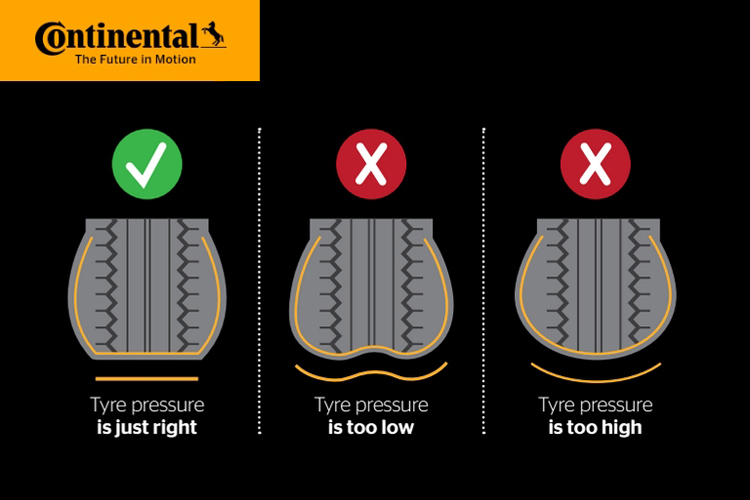 At the same time, it also causes faster tire wear and higher fuel consumption.
At the same time, it also causes faster tire wear and higher fuel consumption.
It should be clear to you that driving with low tire pressure is unsafe. However, some people may need to drive in this condition and need to know which tire pressure is too low to drive.
This indicator indicates that the air pressure in any of the car tires is below the recommended volume. Therefore, you must take this light seriously and must not ignore it under any circumstances. As soon as any indication appears, check the air pressure in all tires. Even if the car is new, you should not skip this step. If you find a bad tire, adjust the pressure.
Colder weather often causes tire pressure to drop, so check all tire pressures. If the pressure drops even after filling with air, there may be a hole in the tire.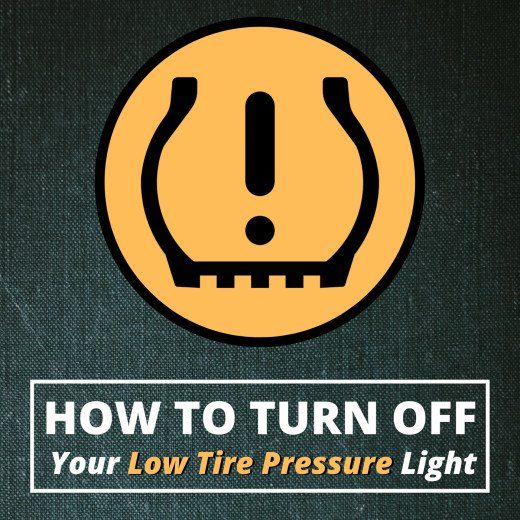 Go to any repair shop to fix the tire, or as a last resort, users may need to replace it.
Go to any repair shop to fix the tire, or as a last resort, users may need to replace it.
In addition to reducing fuel efficiency, low tire pressure also threatens road safety. If the pressure drops below the recommended value, the tires may chemically break at high speeds due to overheating. As a result, there may be accidents. Although people should not drive with low tire pressure, take the following precautions if they have no other choice.
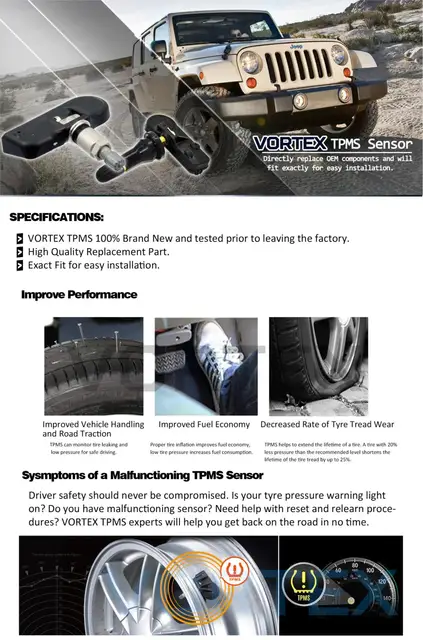 High speed puts unnecessary pressure on the tires and eventually makes the car unstable.
High speed puts unnecessary pressure on the tires and eventually makes the car unstable. Conclusion
Experts do not recommend driving with low tire pressure. Therefore, drivers should be aware of what is considered low tire pressure and try to take the car to the nearest shop as soon as they find out about it. 9expander.close}}-{{/expander.close}}
Incorrect tire pressure can have serious consequences. If the tire pressure is too low, the vehicle's performance becomes weaker, such as the ability to maneuver in hydroplaning situations. Low tire pressure also increases stopping distance. According to tests carried out by ADAC, if the pressure in one of the front tires is 1 bar (100 kPa) below the recommended pressure, the braking distance on wet roads is increased by 10 meters. If the pressure of all tires is 1 bar below the recommended pressure, the side grip of the tires will be reduced by 55 percent. Low tire pressure also leads to rapid tire wear, reduced mileage and even bursting. If the tire pressure is approximately 30 percent lower than required, tire life will be cut in half. With the right pressure, the tires steer precisely and roll easily. This reduces fuel consumption and improves driving comfort.
If the tire pressure is too low, the vehicle's performance becomes weaker, such as the ability to maneuver in hydroplaning situations. Low tire pressure also increases stopping distance. According to tests carried out by ADAC, if the pressure in one of the front tires is 1 bar (100 kPa) below the recommended pressure, the braking distance on wet roads is increased by 10 meters. If the pressure of all tires is 1 bar below the recommended pressure, the side grip of the tires will be reduced by 55 percent. Low tire pressure also leads to rapid tire wear, reduced mileage and even bursting. If the tire pressure is approximately 30 percent lower than required, tire life will be cut in half. With the right pressure, the tires steer precisely and roll easily. This reduces fuel consumption and improves driving comfort.
Your opinion will help us to become better!
13/16 Found this article useful
If you did not find the answer to your question, you can contact us via the feedback form.